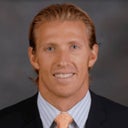Posted underEyelid Surgery q&a
What are the risks associated with a second lower blepharoplasty to remove left over lateral fat?
I had a transconjunctival lower bleph done over one year ago to remove herniated fat in the lateral region of both eyes. Apparently, not enough fat was removed and the surgeon told me last week that the remaining fat migrated from the sides of my eyes into the empty lateral pockets. She offered to repeat the procedure because she did not get all of the fat out the first time. I am afraid of possible hollow/sunken look, bulging eyes, cysts, fluid.. what are possible risks of repeat procedure?
Answers (2)
From board-certified doctors and trusted medical professionals

Dr. C. Blake Perry, MD
Oculoplastic Surgeon, Board Certified in Ophthalmology
Answer
Dr. Mats Hagstrom, MD (license on probation)
Board Certified Plastic Surgeon
Answer
More Eyelid Surgery Questions
See all Eyelid Surgery Q&AWE SEND PRETTY
EMAILS
What’s trending? Who’s turning heads? Which TikTok myths need busting? We’ve got you. No fluff, no gatekeeping—just real talk. Get our free, unfiltered newsletter.